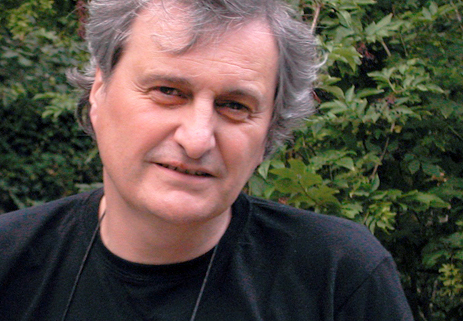Basque ethnography at a glance

Courtesy of Sonia Rueda.
Xabier Sáenz de Gorbea (Las Arenas 1951 – Bilbao 2015), Gure Artea Prize laureate in 2012, soon became a major presence on the Basque art scene, due perhaps to his work capacity, which allowed him to develop his influence and expand his knowledge on multiple levels.
Over his years of teaching at university he guided a myriad of students and artists through art styles and movements both within and outside our borders, thus nurturing a potential for creation unparalleled in other areas of the peninsula into reality. Not only did he instruct them but became a mentor to them, to the extent of opening the doors of his own home weekly so they could use his library.
As an art critic for Deia newspaper, he enlightened us about ongoing exhibitions, and his travels around Europe to artistic calls and proposals (Venice Biennale, Documenta in Kassel) opened windows for us all. However, his dedication went above and beyond what was expected of a mere commentator insofar he would criticize harshly the performance of institutions and specific cultural policies according to the dictates of his conscience and reason.
His journal articles and numerous publications showcase his talent as a writer, a large part of them being catalogues of exhibitions he presented throughout the Basque territory and museums. Indeed, his love and concern for the Basque Country and Basque art seeps through his work. The staging of art exhibitions, though ephemeral in nature, did bring out the artist in him.
He devoted a great deal of his energy to Gernika, the heart of his country, as a curator of exhibitions, “Art in Gernika 1937–1987” (1987) and “Pospot” (1988), an art judge, and a promoter of public art. Diligent in his vocation, he worked in partnership with Euskal Herria Museum for sixteen years, starting with the exhibition “Public funerary statuary and Basque sculptors 1870–1936” (1999).
His greatest work are, no doubt, his eight ‘Gernikas’: “Remigio Mendiburu’s Gernika” (2008), “Nestor Basterretxea’s Gernika” (2009), “Jorge Oteiza’s Gernika” (2010), “Ramón Carrera’s Gernika” (2011), “Ortiz de Elgea’s Gernika” (2012), “The last Gernikas” (2013), “Aranoa and Guezala’s Gernikas. The Eresoinka case” (2014), and “The Gernikas from Barcelona” (2015). He contributed to the planning and selection of public art, curated artworks for exhibition, shed light on certain artistic attributes previously ignored, and even encouraged reflections on the bombing from an innovative artistic and historical perspective.
All of the above is only part of his knowledge. Confirming his commitment with the project, his last exhibition, “The Gernikas from Barcelona”, outlived him within these walls. In 2016 the museum paid homage to him by hosting a compilation of his generous work, counting on friends and fellow artists who wished to participate with their own artworks as a compliment to Xabier. Now we are left with his example, his tenacity and his wisdom to show us the way to the future. Let him be our guide.
Felícitas A. Lorenzo – Director of Euskal Herria Museum
Translated by Jaione Bilbao – Ethnography Department – Labayru Fundazioa

